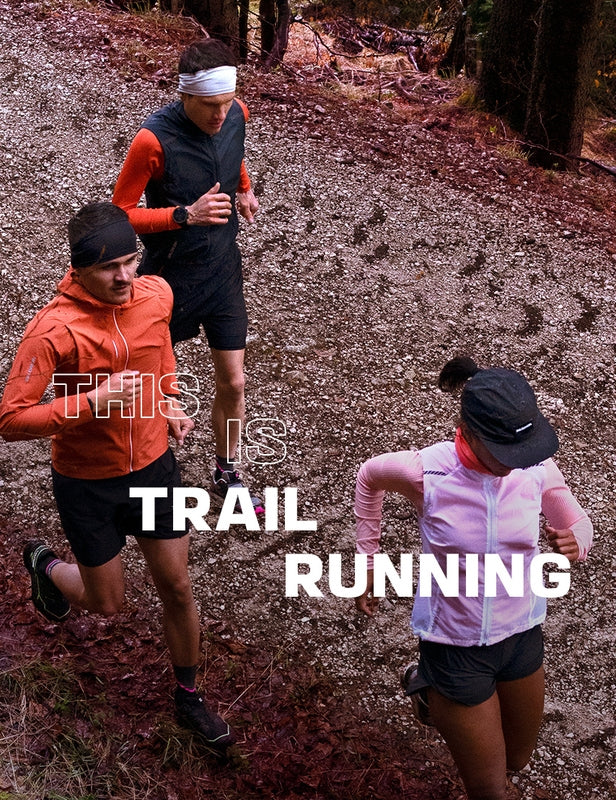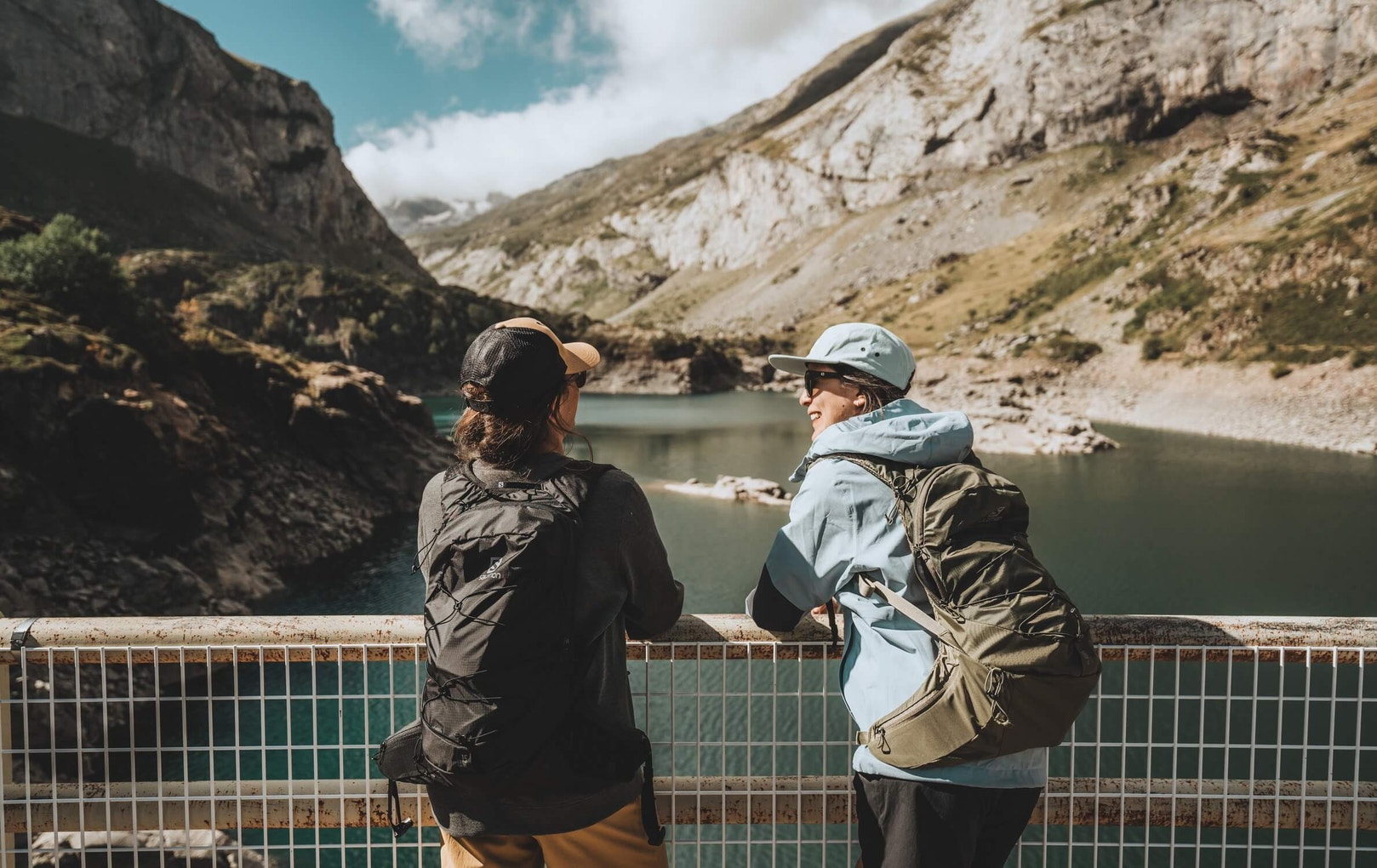When you love running it doesn’t really matter much where you do it, on the road or trail, as long as you’re running. But what are the differences between road and trail running? Is one better for your health than the other? What are the differences in equipment, especially shoes?
To begin, we should really try to define the two activities. We fully understand there’s a whole lot of grey area between trail and road running but for the sake of argument, we’ll call road running any kind of running that’s done on a paved surface while trail running takes place on uneven terrain (including a jog along a mellow path in the middle of a city).
Having said that, we also want to emphasize that these days, advances in equipment have come so far that runners can pretty much run anywhere with anything. Clearly, some running shoes are designed specifically for particular uses but the point we’re trying to make is that it’s more a question of comfort and what kind of experience you’ll have. So, if you find yourself in the middle of a city with the time to do a quick loop around downtown but all you have with you is a pair of trail shoes then dude, lace those puppies up and go!
Check out "Road running stories & guides" including articles and videos.
Check out "Trail running stories & guides" including articles and videos.
 @JeremyBernard
@JeremyBernard

Without a doubt, running shoes are where some of the biggest differences between road and trail are most apparent. Trail shoes have evolved from road shoes as a way to better adapt to the trail environment. For instance, while road shoes feature relatively flat outsoles for increased speed and traction on smooth surfaces, trail running shoes feature lugged outsoles to increase grip on loose, uneven, and slippery terrain.
In addition, road shoes usually have a wider, more comfortable toe box, while trail shoes generally fit closer to the foot to maximize precision and control when trying to move quickly over technical, uneven terrain. However, it’s also true that shoe brands have heard the demands of trail runners with wide feet and are supplying more models in a wide-width option. Again, it’s all about what works best for you so if you prefer a snug toe box in your road shoes or more wiggle room in your trail shoes, then that’s def what you should do.
Women's Road Running Shoes Men's Road Running Shoes

Cushioning is an area that’s more difficult to pin down because of the recent developments in both trail and road technologies. Many trail runners prefer shoes with low stack height for their increased agility, enhanced feel for the terrain, and superior stability. However, there has been so much progress made in technology recently that your shoe’s cushioning now performs more like a suspension system that supports different loads without instability.
Trail shoes also generally feature more protection including toe protection, stiffer soles, and ripstop or reinforced uppers in many models. And while water drainage is important in trail shoes due to the likelihood of stream crossings and splashing through puddles, Gore-Tex and other waterproof technologies are often found in trail shoes as a means of protecting against the rain, snow, and cold. Waterproof technology is less frequently found in road shoes and its usefulness is, of course, heavily dependent on your location.
Women's Trail Running Shoes Men's Trail Running Shoes
Other Equipment
At its core, trail running has always been about getting out for an adventure, which has made the equipment more critical. Ingenious advancements have been made in increasingly comfortable carrying systems that accommodate the extra water, food, and clothing layers required to be self-sufficient for longer periods in the backcountry regardless of what happens with the weather. Running poles are increasingly being used for added stability and security for all distances, and increasingly used for propulsion for short vertical runs. Having said all that, there has been a recent trend towards less equipment, especially as the definition of trail running is growing to include more casual runs.
On the other hand, often the only equipment you need when road running is a mobile payment app or a credit card so that if you bonk you can simply find a place to rehydrate and refuel enough to make it back.
 @KylieFly
@KylieFly

Mental aspect
While the mental differences might not be as apparent, for some people they can be some of the most profound – it all depends on what the runners want to get from their run. And because no two runners are alike, these differences are often quite personal. For instance, some people like to run solo, while others enjoy the communal aspect of club runs. Some runners won’t leave the house without headphones, while others look forward to the opportunity to escape from all technology for a while. But despite all the differences, there are some common threads. For instance, many trail runners enjoy hitting the trails as a way to escape the urban environment and reconnect with nature. And because running on technical trails requires you to focus 100% on your footwork, it’s the perfect way to completely clear your head and escape the stress of everyday life for a while.
Check out our article about the five benefits of road running.
On the other hand, running on a smooth, paved surface means it’s easier to zone out and let your mind wander. Of course, it goes without saying that you have to remain aware of hazards like traffic and deviations in the road surface but even with a certain amount of awareness, road running is still a great way to jack your brain full of endorphins and let your mind wander. Road runs are the perfect way for travelers to unwind after a long flight and at the same time, it’s an awesome way to get the feel of a new city.
Road running shoesRoad running clothing Road running belts and packs
In the end, there are clearly some differences between road running and trail running. But at the same time, running is running, and many pro runners will jump at the chance to integrate the other discipline into their training whenever they get the chance.
At the end of the day, running – whether it’s on the road or on the trail – is all about disconnecting from the pressures of daily life, relieving stress, getting outside in the sunshine, rain or snow, finding the flow, and tapping into a primal instinct that today’s societal demands do everything possible to suppress. Or hey, it could simply be about burning calories and staying fit. Regardless of the reason, the important thing about running, whether road or trail, is that you do you!
Learn more on our advice page.
Trail running shoesTrail running clothing Trail running belts and packs



